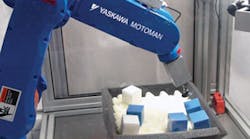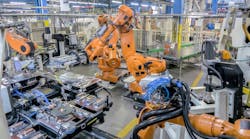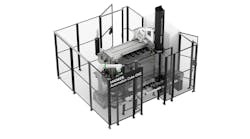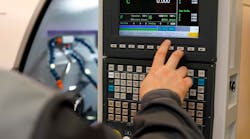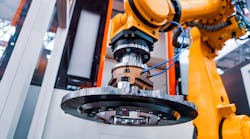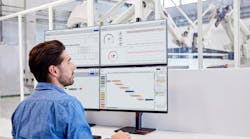Motoman Robotics has introduced two 3D-recognition vision functions for its industrial robot installations. The division of Yaskawa America Inc. is the second largest robotics company in the Americas with over 30,000 units installed, performing arc welding, assembly, coating, dispensing, material handling, material cutting, material removal and spot welding operations.
The first new capability, MotoSight™ 3D Spatial Vision for part picking, box moving, and automated kitting, is a flexible and scalable 3D vision guidance package that works in real time. It’s easy to set up and offers an alignment wizard that guides users through calibration of the cameras and robot, and then loading standard CAD files of parts to be tracked. Calibration files can interface to C, C++ or MATLAB robotic real-time control programs.
MotoSight 3D Spatial Vision uses pattern matching to determine true 3D for six degrees (X, Y, Z, Rx, Ry, Rz) of position and pose information. It offers guided intrinsic (camera/camera) and extrinsic (camera/robot) calibration. It provides 2-4 mm accuracy at typical robot working distance using off-the-shelf Logitech 9000 webcams. GigE cameras can be used to improve accuracy. The system achieves accuracy thanks to advanced vision processing of raw images for image rectification, Laplacian of Gaussian and dense stereopsis for full-frame depth maps.
“MotoSight 3D Spatial Vision is a great step forward in 3D vision guidance for industrial robots,” according to Roger Christian, vice president-Marketing and International Groups. “Powered by Universal Robotics’ Spatial Vision™ Robotics software, we are now able to offer 3D vision guidance at 2D prices that can be customized to a user’s needs.”
Universal Robotics develops software that allows machines to record and learn from their experiences, react and adapt to surroundings, and perform tasks that may be costly, dangerous or difficult for humans. The company’s CEO David Peters said its Spatial Vision Robotics software resolves several problems for 3D vision systems using off-the-shelf cameras. “The 3D vision market has long struggled with very expensive systems that require specialized equipment and are difficult to install, scale or customize,” according to Peters. “Together with Motoman, we have created a 3D guidance system for industrial robots that enhances several facets of materials handling.”
The second introduction is MotoSight™ 3D CortexVision, which is recommended for machine loading, product sorting, and welding, because it simplifies the use of 3D vision in robotic guidance applications. Motoman indicates it functions similarly to the human visual process.
MotoSight 3D CortexVision can learn a large number of objects and recognize any of the identified objects regardless of presentation within the visual field of the camera. Within one second, the vision process can identify the part in front of the camera, even very complex parts, and where it is located, and place it accurately.
Thanks to the system’s point-and-click programming interface, minimal downtime is required to introduce new parts due to its simple point-and-click programming interface. No calibration is required due to advanced algorithm and unique recognition of patterns programmed.
Using a single 2D camera (GigE technology), MotoSight 3D CortexVision returns object position information in six degrees of freedom (X, Y, Z, roll, pitch and yaw) without the use of structured lighting. This is an evolutional change in which a single camera can be utilized to provide a 3D solution. Accuracy within +/- 0.5 mm can be achieved with additional inspections.
